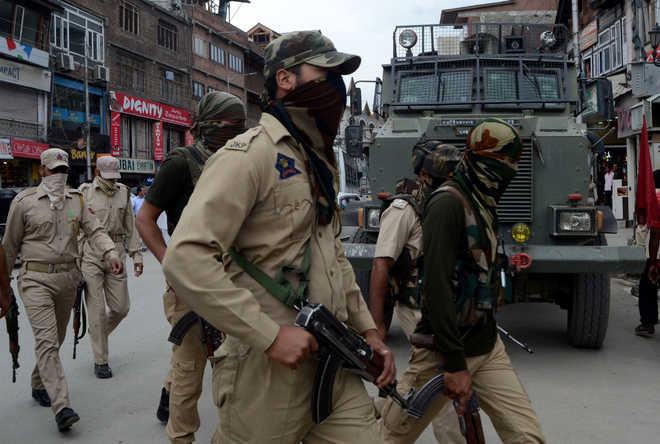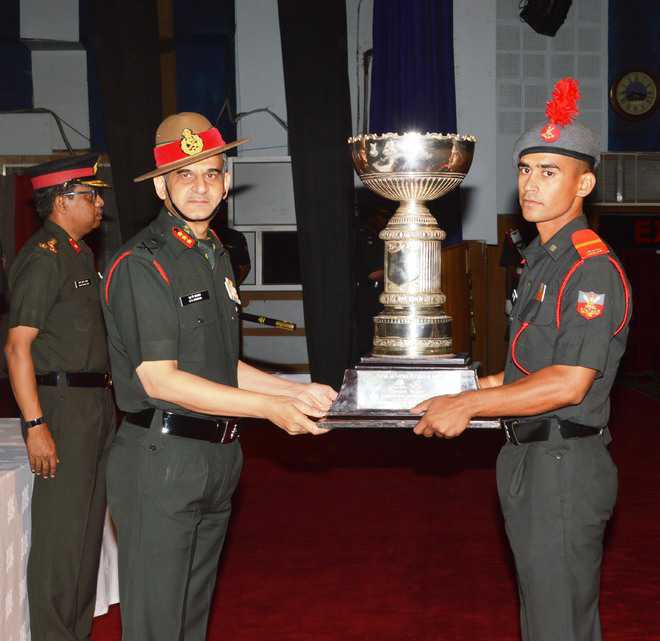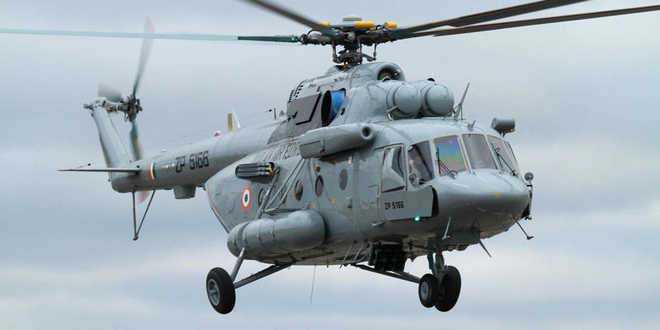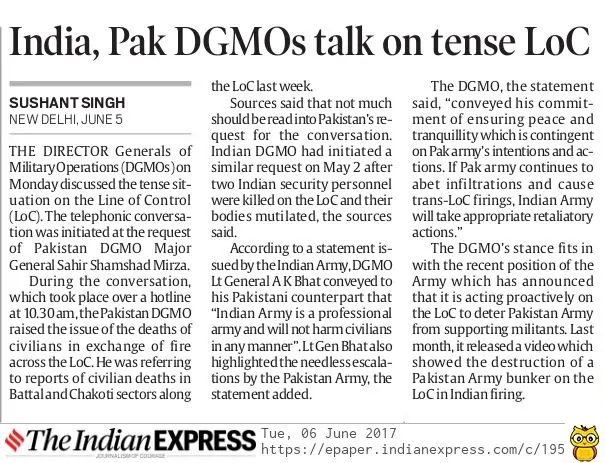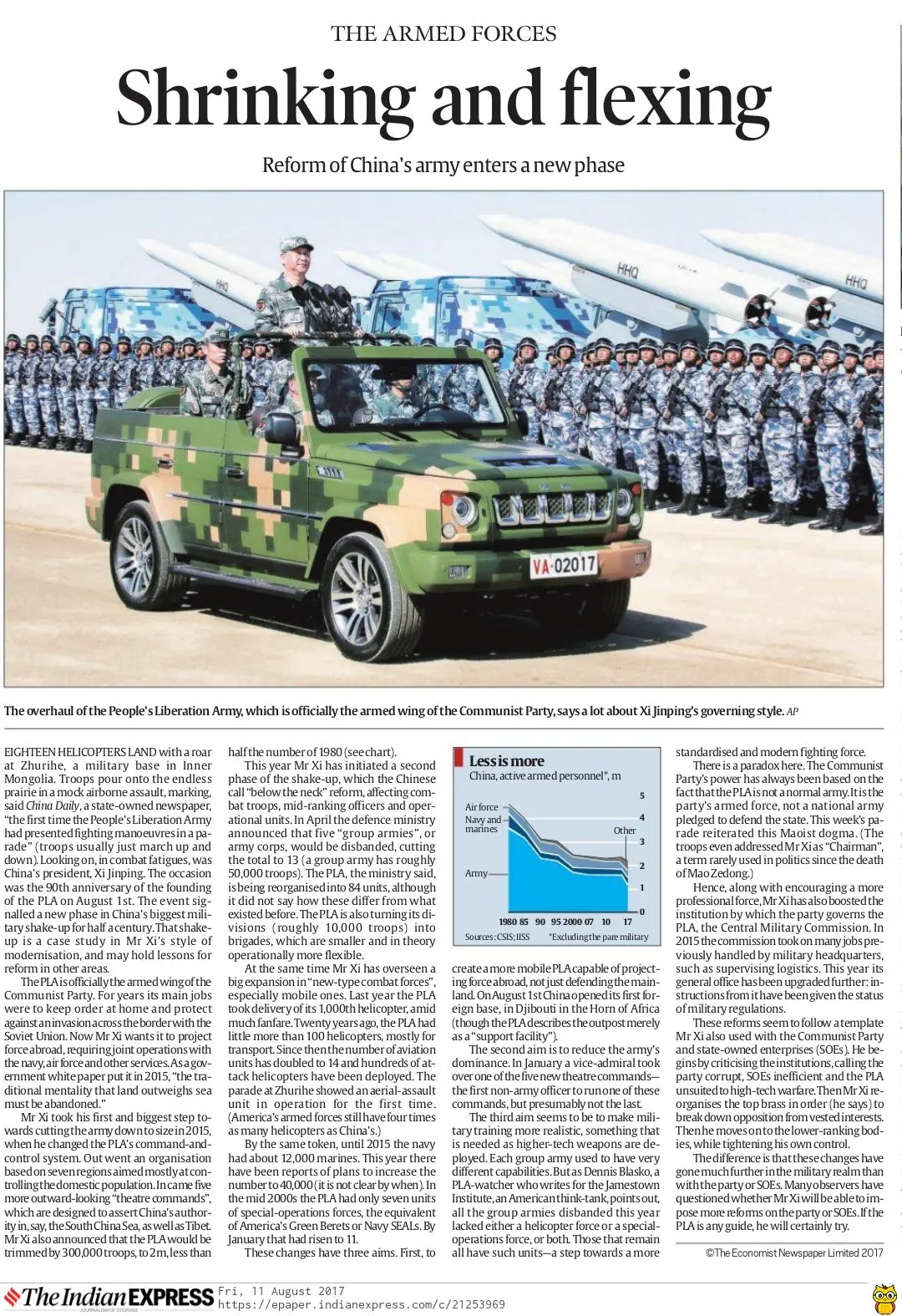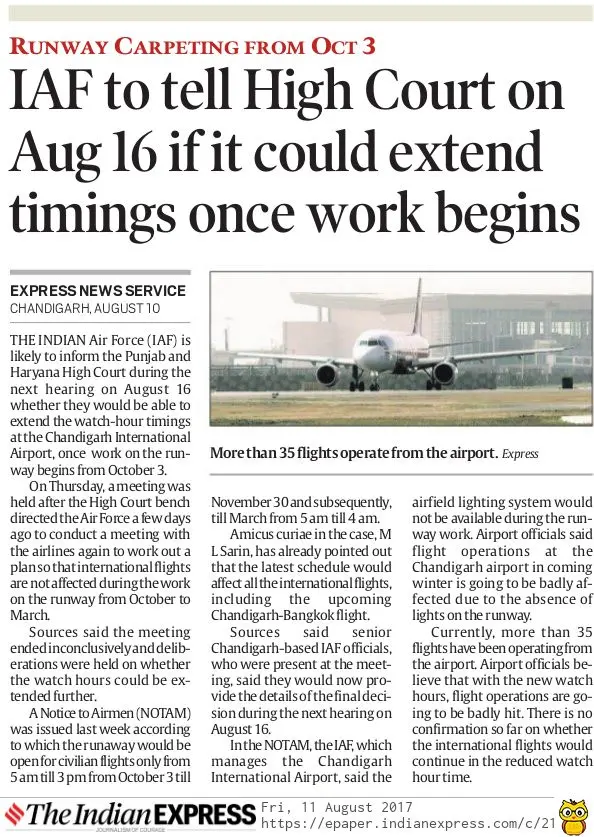If anything, Prime Minister Narendra Modi’s speech, on Independence Day 2017, contained a plethora of issues from the political, social and economic domains, most of which have been related to his pet projects. It was a review, creation of hope through projection of future endeavours and an urging to the people to do more even as the government did its bit.
What appeared to have taken a slightly lower rung in priority appeared to be the strategic realm, an area which he has very keenly and energetically steered for the last three years.
People expected him to lay emphasis on the achievements of some of his recent foreign visits such as to the US, Israel and Germany; especially the partnerships that have been successfully established. Some segments also expected references to the ongoing stand-off with China at Doklam Plateau for over two months; perhaps even a word or two on Pakistan’s negativity and an odd reference to the regional security environment, especially in the light of India’s decision not to participate in the Belt and Road Initiative (BRI) conference in Beijing.
These expectations were perhaps raised by the Prime Minister’s speech on Independence Day 2016 in which he devoted much time to Pakistan; two minutes each to Gilgit-Baltistan (GB), Pakistan-occupied Kashmir and Baluchistan. That reference had an electrifying effect almost immediately. Baloch nationalists stationed at or residing in virtual exile in different parts of the world were hugely enthused by the reference to them. Baloch think tanks emerged out of nowhere and many articles authored by Baloch appeared in international media emphasising on their nationalism and separatism. All this happened much to the discomfort of Pakistan, whose attempts to rake up Kashmir internationally did not meet even half the attention the Baloch managed to attract.
The absence of any such reference to foreign affairs, regional or international, in this year’s speech appears to indicate Mr Modi’s experiment with communication strategy; a successful experiment if at all. Surprise and the unexpected are principles in the use of communication strategy, which is really a refined euphemism for perception management. It is sometimes a term to cover up for the far less discrete term – psychological warfare. Nations indulge in this through carefully chosen words and gestures of their leaders and spokesmen. China has of course taken the concept and turned it on its head through its far from discrete, and in fact, fairly crude usage of words in chosen media; something that is hardly fetching it the dividends it sought.
So how does the absence of reference to borders, China, or Pakistan in the Prime Minister’s speech aid Indian policy and strategy? How does the reference to Kashmir in far more benign terms stand as an element of internal strategy? These are interesting issues to analyse. The focus on Pakistan in the 2016 speech no doubt came from the fact that Pakistan was on a high after the 8 July 2016 killing of Burhan Wani in Kashmir, an event which had thrown the Valley into utter mayhem, fully exploited by Pakistan to turn alienation to unprecedented levels. Its confidence then needed to be pricked and it was embarrassed and forced to look within with the raking of issues of PoK, GB and Baluchistan.
This year the focal point in foreign and strategic affairs at this juncture is Doklam and in turn, China. With this, at the centre, it was important to build narratives of perception through unsaid things. The silence on Doklam must have perturbed observers in Beijing who may have imagined that the Indian Prime Minister would, like them, resort to rhetoric for the sake of his constituency and popularity, thus offering them a handle to work on and respond. By denying that opportunity to the Chinese officials through studied silence and leaving communication of India’s stance to what was spoken by External Affairs Minister Sushma Swaraj in Parliament, Mr Modi has actually scored more brownie points for the Indian strategy and probably enhanced his own stature a notch or two in the eyes of the international community.
Neither has a weakness been projected nor a perception that India was spoiling for a showdown. This needs to be linked to the silence on the China Pakistan Economic Corridor (CPEC) and the larger BRI, issues on which the lack of Indian support have reportedly irked China. Since Doklam is the result of these issues, commenting on them would also be counterproductive. Mention of only international support without naming any nations ensured once again that he gave no opportunity for anyone to comment on the emerging partnerships which some may find irksome.
On Pakistan, the silence should be interpreted by the link to the issues with China, which has been making snide public comments about Kashmir. It has also sent its Vice Premier to Islamabad for Pakistan’s Independence Day where the issue of Kashmir and Doklam are bound to be on the cards. In the same light, even Afghanistan did not find mention although gratitude was expressed to those nations, who have been assisting India in its fight against terrorism; cooperation of Afghanistan is a part of this.
Very importantly, Mr Modi probably chose to address Pakistan through the medium of expression of gratitude to the international community for the support against terror. In addition, he spoke just sufficiently on Kashmir, choosing also to communicate a message. The recent large-scale success of the Indian Army and other security forces (SF) in counter-terror operations was deliberately omitted and instead for the first time an element of soft power strategy was enunciated through his statement – Na goli se, na gaali se, Kashmir ki samasya suljhegi gale lagaane se (Not by bullets, not by abuse, Kashmir’s problem will be resolved by embracing all Kashmiris)”.
There is expected cynicism in some quarters, but Mr Modi has actually enunciated a long-standing requirement to change concept to a mix of hard and soft power. The seizure of opportunity is pragmatic. Communication strategy in Kashmir is all about messaging. By allowing the SF to dominate the security scenario over the last three months and chalk up an impressive record in neutralising terrorists, the next step is from a position of strength; the next step inevitably in such situations is the employment of soft power. What is most impressive is that Mr Modi has not bothered about the flow of public opinion on social media nor come under pressure of rabble rousers, who still think that Kashmir should only be resolved through the hard kinetic route. Translating the balanced strategy will not be easy as there are few among the SF hierarchy who understand this beyond the tactical level.

Chief Minister Mehbooba Mufti has the experience of doing this in 2002-05 through the Healing Touch programme but her party representatives presently are not in sync with the people. The clarity in concept of outreach after the Prime Minister’s sensible indicator is the crucial first step. Both the Healing Touch of 2002-05 and Heart Doctrine of 2010-12 had the right approach. A more detailed examination of these may provide the line to move ahead.





















































